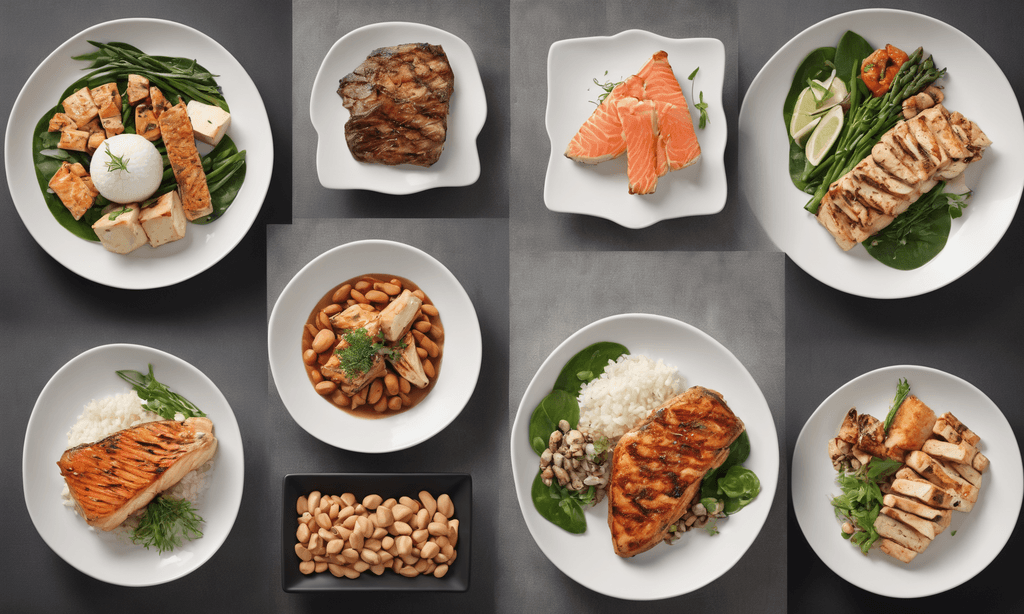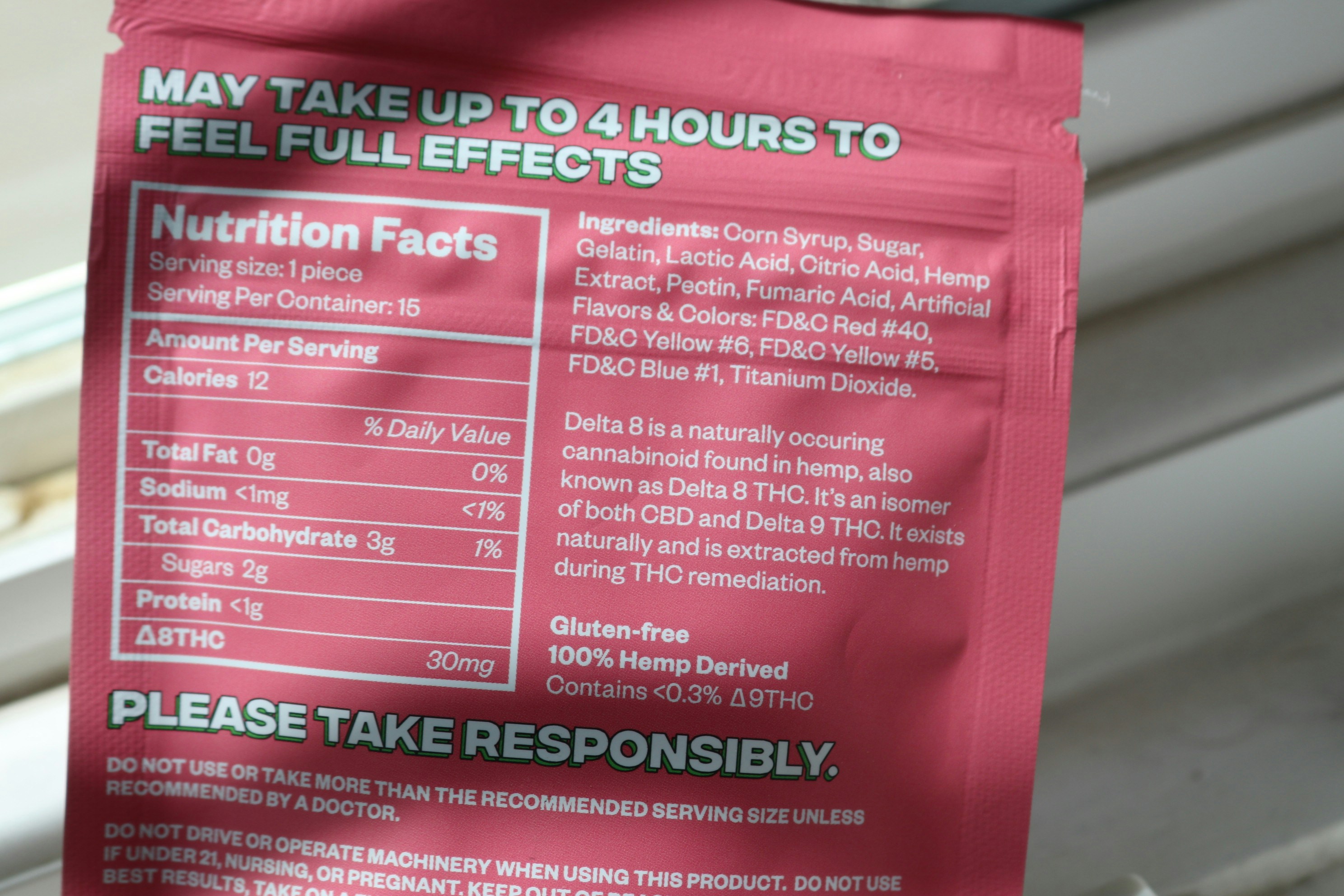


The Science of Weight Loss and Macronutrients
Last updated: Feb 12, 2024
Nutrition
If you're feeling overwhelmed by the number of fad diets and conflicting nutrition advice, take a deep breath. You're not alone! We're going back to basics to understand the fundamental science of weight loss. We will then dive into macronutrients and how they fit into the big picture with the help of Amelia, your AI nutrition coach.
The Simple Science Behind Weight Loss
Weight loss can often seem complex and elusive, but it boils down to a simple scientific principle: creating a caloric deficit. Regardless of the numerous fad diets flooding the market, they all aim to achieve this fundamental goal. There's nothing inherently magical about them; they are just different ways to reduce calorie intake.
Calories In vs. Calories Out: To lose weight, you must burn more calories than you consume, creating a 'caloric deficit.'
The 3,500-Calorie Rule: A deficit of 3,500 calories equals a weight loss of about one pound.
How Your Body Burns Calories
To effectively create a caloric deficit, it's crucial to understand how your body spends calories. These calories are distributed across several functions:
Basal Metabolic Rate (BMR): This is the energy your body uses at rest for vital functions like breathing and circulation.
Physical Activity: Any form of movement, from daily chores to structured exercise, consumes calories.
Creating a Sustainable Caloric Deficit
It's not just about cutting calories; it's about crafting a deficit that's both healthy and sustainable:
A Balanced Approach: Cutting calories drastically can be counterproductive. A balanced diet ensures you get essential nutrients while maintaining a calorie deficit.
Exercise's Role: Regular physical activity helps increase your calorie expenditure, contributing to a sustainable caloric deficit.
The Role and Caloric Value of Each Macronutrient
While you can technically eat anything, including pizza, burgers, or even Twinkies, and still lose weight if you're in a caloric deficit (as seen in the famous Twinkie Diet experiment), it's crucial to focus on macronutrients for effective fat loss and overall health.
Think of macronutrients as the fuel for your body's engine. They are the big three: carbohydrates, proteins, and fats. Each plays a unique role in keeping you going.
Proteins
Role: Proteins are crucial for building and repairing tissues, including muscles. They also play a vital role in creating hormones and enzymes.
Calorie Content: 1g = 4 calories
Weight Loss and Muscle Gain: Proteins are essential in weight loss diets as they can lead to increased satiety, reduced calorie intake, and preservation of muscle mass [1]. High-protein diets have been extensively studied for their benefits in weight management [2], [3], [4].
Carbohydrates
Role: Carbohydrates are the body's primary energy source. They break down into glucose, which fuels your body's cells, tissues, and organs.
Calorie Content: 1g = 4 calories
High Proportion in Diet: Carbs are typically high in a standard diet because they are easily accessible and efficient energy sources. Focusing on carbs with high fiber content (whole grains, fruits, and vegetables) is linked to lower body weight and gut health [5].
Fats
Role: Fats are vital for normal growth and development, absorbing certain vitamins, and providing energy.
Calorie Content: 1g = 9 calories. Fats are calorie-dense, more than double the calories of proteins and carbohydrates.
Lower Proportion in Diet: Due to their high-calorie density, fats are consumed in smaller quantities in a balanced diet. This doesn't mean fats are bad; instead, the focus should be on healthy fats like those from avocados, nuts, and olive oil.
Amelia's IIFYM Approach
Amelia follows the If It Fits Your Macros (IIFYM) methodology, emphasizing the balance of macronutrients tailored to individual needs. This approach offers flexibility, allowing you to enjoy a variety of foods while meeting your weight and nutritional goals.
Personalized Macro Goals: Amelia calculates your macro needs considering factors like age, gender, activity level, and specific health objectives.
Flexibility and Empowerment: With Amelia, you're not restricted to specific food types. Instead, you're educated on making balanced choices within your macro targets, promoting sustainable and enjoyable eating habits.
Dynamic Adjustments: As you progress, Amelia adjusts your macros to reflect changes in your body and goals, ensuring that your diet evolves with you.
The Importance of Food Logging in IIFYM
To effectively follow the IIFYM approach, consistent food logging is crucial. It allows you to:
Track Macronutrient Intake: Ensure you are meeting your macro goals daily.
Understand Portion Sizes: Gain awareness of portion sizes and how different foods impact your macro targets.
Make Informed Food Choices: Learn how to balance indulgences with healthier options while staying within your macro limits.
See Patterns and Make Adjustments: Identify eating patterns and make necessary changes for better results.
Conclusion
Understanding and balancing macronutrients is key to a healthy diet. Amelia's IIFYM approach provides the flexibility and personalization needed for a sustainable, enjoyable nutritional journey. With her guidance, you can make informed food choices that align with your body's needs and personal goals.
Bonus: Debunking Weight Loss Myths
In the fitness industry, misinformation is abundant, leading to confusion and often discouragement. Here, we'll address common weight loss myths grounded in meta-analyses and Randomized Controlled Trials (RCTs) studies.
Myth 1: Low-Carb Diets Are the Best Way to Lose Weight
Reality: Low-carb and Keto diets deplete glycogen stores, causing water loss and an initial rapid weight drop, often mistaken for fat loss. Low-carb diets can be effective for weight loss but are not inherently superior to other diet types. Finding a sustainable dietary pattern that fits your lifestyle and preferences is most effective for sustainable weight loss.
Dive deeper into insights from the latest research on low-fat vs low-carb diets for weight loss.
Myth 2: You Must Avoid All Fats to Lose Weight
Reality: Dietary fats are essential for health. Studies have shown that healthy fats can support weight loss and improve overall health. The focus should be reducing saturated and trans-fats while incorporating sufficient amounts of unsaturated fats like those found in avocados and nuts [6].
Dive deeper into insights from the latest research on low-fat vs low-carb diets for weight loss.
Myth 3: Skipping Meals Helps Lose Weight Faster
Reality: While skipping meals can reduce calorie intake, it can also lead to increased hunger and overeating later. Consistent meal patterns and mindful eating practices are generally more effective for sustainable weight loss.
Myth 4: You Must Feel Hungry All the Time to Lose Weight
Reality: Feeling constantly hungry can be counterproductive. A balanced diet with adequate protein, fiber, and healthy fats promotes satiety and supports weight loss without constant hunger.
Myth 5: Extreme Caloric Restriction is the Best Way to Lose Weight
Reality: Drastically cutting calories can lead to muscle loss, slowed metabolism, and nutrient deficiencies. A moderate caloric deficit is more sustainable and healthier in the long term.
If you're feeling overwhelmed by the number of fad diets and conflicting nutrition advice, take a deep breath. You're not alone! We're going back to basics to understand the fundamental science of weight loss. We will then dive into macronutrients and how they fit into the big picture with the help of Amelia, your AI nutrition coach.
The Simple Science Behind Weight Loss
Weight loss can often seem complex and elusive, but it boils down to a simple scientific principle: creating a caloric deficit. Regardless of the numerous fad diets flooding the market, they all aim to achieve this fundamental goal. There's nothing inherently magical about them; they are just different ways to reduce calorie intake.
Calories In vs. Calories Out: To lose weight, you must burn more calories than you consume, creating a 'caloric deficit.'
The 3,500-Calorie Rule: A deficit of 3,500 calories equals a weight loss of about one pound.
How Your Body Burns Calories
To effectively create a caloric deficit, it's crucial to understand how your body spends calories. These calories are distributed across several functions:
Basal Metabolic Rate (BMR): This is the energy your body uses at rest for vital functions like breathing and circulation.
Physical Activity: Any form of movement, from daily chores to structured exercise, consumes calories.
Creating a Sustainable Caloric Deficit
It's not just about cutting calories; it's about crafting a deficit that's both healthy and sustainable:
A Balanced Approach: Cutting calories drastically can be counterproductive. A balanced diet ensures you get essential nutrients while maintaining a calorie deficit.
Exercise's Role: Regular physical activity helps increase your calorie expenditure, contributing to a sustainable caloric deficit.
The Role and Caloric Value of Each Macronutrient
While you can technically eat anything, including pizza, burgers, or even Twinkies, and still lose weight if you're in a caloric deficit (as seen in the famous Twinkie Diet experiment), it's crucial to focus on macronutrients for effective fat loss and overall health.
Think of macronutrients as the fuel for your body's engine. They are the big three: carbohydrates, proteins, and fats. Each plays a unique role in keeping you going.
Proteins
Role: Proteins are crucial for building and repairing tissues, including muscles. They also play a vital role in creating hormones and enzymes.
Calorie Content: 1g = 4 calories
Weight Loss and Muscle Gain: Proteins are essential in weight loss diets as they can lead to increased satiety, reduced calorie intake, and preservation of muscle mass [1]. High-protein diets have been extensively studied for their benefits in weight management [2], [3], [4].
Carbohydrates
Role: Carbohydrates are the body's primary energy source. They break down into glucose, which fuels your body's cells, tissues, and organs.
Calorie Content: 1g = 4 calories
High Proportion in Diet: Carbs are typically high in a standard diet because they are easily accessible and efficient energy sources. Focusing on carbs with high fiber content (whole grains, fruits, and vegetables) is linked to lower body weight and gut health [5].
Fats
Role: Fats are vital for normal growth and development, absorbing certain vitamins, and providing energy.
Calorie Content: 1g = 9 calories. Fats are calorie-dense, more than double the calories of proteins and carbohydrates.
Lower Proportion in Diet: Due to their high-calorie density, fats are consumed in smaller quantities in a balanced diet. This doesn't mean fats are bad; instead, the focus should be on healthy fats like those from avocados, nuts, and olive oil.
Amelia's IIFYM Approach
Amelia follows the If It Fits Your Macros (IIFYM) methodology, emphasizing the balance of macronutrients tailored to individual needs. This approach offers flexibility, allowing you to enjoy a variety of foods while meeting your weight and nutritional goals.
Personalized Macro Goals: Amelia calculates your macro needs considering factors like age, gender, activity level, and specific health objectives.
Flexibility and Empowerment: With Amelia, you're not restricted to specific food types. Instead, you're educated on making balanced choices within your macro targets, promoting sustainable and enjoyable eating habits.
Dynamic Adjustments: As you progress, Amelia adjusts your macros to reflect changes in your body and goals, ensuring that your diet evolves with you.
The Importance of Food Logging in IIFYM
To effectively follow the IIFYM approach, consistent food logging is crucial. It allows you to:
Track Macronutrient Intake: Ensure you are meeting your macro goals daily.
Understand Portion Sizes: Gain awareness of portion sizes and how different foods impact your macro targets.
Make Informed Food Choices: Learn how to balance indulgences with healthier options while staying within your macro limits.
See Patterns and Make Adjustments: Identify eating patterns and make necessary changes for better results.
Conclusion
Understanding and balancing macronutrients is key to a healthy diet. Amelia's IIFYM approach provides the flexibility and personalization needed for a sustainable, enjoyable nutritional journey. With her guidance, you can make informed food choices that align with your body's needs and personal goals.
Bonus: Debunking Weight Loss Myths
In the fitness industry, misinformation is abundant, leading to confusion and often discouragement. Here, we'll address common weight loss myths grounded in meta-analyses and Randomized Controlled Trials (RCTs) studies.
Myth 1: Low-Carb Diets Are the Best Way to Lose Weight
Reality: Low-carb and Keto diets deplete glycogen stores, causing water loss and an initial rapid weight drop, often mistaken for fat loss. Low-carb diets can be effective for weight loss but are not inherently superior to other diet types. Finding a sustainable dietary pattern that fits your lifestyle and preferences is most effective for sustainable weight loss.
Dive deeper into insights from the latest research on low-fat vs low-carb diets for weight loss.
Myth 2: You Must Avoid All Fats to Lose Weight
Reality: Dietary fats are essential for health. Studies have shown that healthy fats can support weight loss and improve overall health. The focus should be reducing saturated and trans-fats while incorporating sufficient amounts of unsaturated fats like those found in avocados and nuts [6].
Dive deeper into insights from the latest research on low-fat vs low-carb diets for weight loss.
Myth 3: Skipping Meals Helps Lose Weight Faster
Reality: While skipping meals can reduce calorie intake, it can also lead to increased hunger and overeating later. Consistent meal patterns and mindful eating practices are generally more effective for sustainable weight loss.
Myth 4: You Must Feel Hungry All the Time to Lose Weight
Reality: Feeling constantly hungry can be counterproductive. A balanced diet with adequate protein, fiber, and healthy fats promotes satiety and supports weight loss without constant hunger.
Myth 5: Extreme Caloric Restriction is the Best Way to Lose Weight
Reality: Drastically cutting calories can lead to muscle loss, slowed metabolism, and nutrient deficiencies. A moderate caloric deficit is more sustainable and healthier in the long term.
If you're feeling overwhelmed by the number of fad diets and conflicting nutrition advice, take a deep breath. You're not alone! We're going back to basics to understand the fundamental science of weight loss. We will then dive into macronutrients and how they fit into the big picture with the help of Amelia, your AI nutrition coach.
The Simple Science Behind Weight Loss
Weight loss can often seem complex and elusive, but it boils down to a simple scientific principle: creating a caloric deficit. Regardless of the numerous fad diets flooding the market, they all aim to achieve this fundamental goal. There's nothing inherently magical about them; they are just different ways to reduce calorie intake.
Calories In vs. Calories Out: To lose weight, you must burn more calories than you consume, creating a 'caloric deficit.'
The 3,500-Calorie Rule: A deficit of 3,500 calories equals a weight loss of about one pound.
How Your Body Burns Calories
To effectively create a caloric deficit, it's crucial to understand how your body spends calories. These calories are distributed across several functions:
Basal Metabolic Rate (BMR): This is the energy your body uses at rest for vital functions like breathing and circulation.
Physical Activity: Any form of movement, from daily chores to structured exercise, consumes calories.
Creating a Sustainable Caloric Deficit
It's not just about cutting calories; it's about crafting a deficit that's both healthy and sustainable:
A Balanced Approach: Cutting calories drastically can be counterproductive. A balanced diet ensures you get essential nutrients while maintaining a calorie deficit.
Exercise's Role: Regular physical activity helps increase your calorie expenditure, contributing to a sustainable caloric deficit.
The Role and Caloric Value of Each Macronutrient
While you can technically eat anything, including pizza, burgers, or even Twinkies, and still lose weight if you're in a caloric deficit (as seen in the famous Twinkie Diet experiment), it's crucial to focus on macronutrients for effective fat loss and overall health.
Think of macronutrients as the fuel for your body's engine. They are the big three: carbohydrates, proteins, and fats. Each plays a unique role in keeping you going.
Proteins
Role: Proteins are crucial for building and repairing tissues, including muscles. They also play a vital role in creating hormones and enzymes.
Calorie Content: 1g = 4 calories
Weight Loss and Muscle Gain: Proteins are essential in weight loss diets as they can lead to increased satiety, reduced calorie intake, and preservation of muscle mass [1]. High-protein diets have been extensively studied for their benefits in weight management [2], [3], [4].
Carbohydrates
Role: Carbohydrates are the body's primary energy source. They break down into glucose, which fuels your body's cells, tissues, and organs.
Calorie Content: 1g = 4 calories
High Proportion in Diet: Carbs are typically high in a standard diet because they are easily accessible and efficient energy sources. Focusing on carbs with high fiber content (whole grains, fruits, and vegetables) is linked to lower body weight and gut health [5].
Fats
Role: Fats are vital for normal growth and development, absorbing certain vitamins, and providing energy.
Calorie Content: 1g = 9 calories. Fats are calorie-dense, more than double the calories of proteins and carbohydrates.
Lower Proportion in Diet: Due to their high-calorie density, fats are consumed in smaller quantities in a balanced diet. This doesn't mean fats are bad; instead, the focus should be on healthy fats like those from avocados, nuts, and olive oil.
Amelia's IIFYM Approach
Amelia follows the If It Fits Your Macros (IIFYM) methodology, emphasizing the balance of macronutrients tailored to individual needs. This approach offers flexibility, allowing you to enjoy a variety of foods while meeting your weight and nutritional goals.
Personalized Macro Goals: Amelia calculates your macro needs considering factors like age, gender, activity level, and specific health objectives.
Flexibility and Empowerment: With Amelia, you're not restricted to specific food types. Instead, you're educated on making balanced choices within your macro targets, promoting sustainable and enjoyable eating habits.
Dynamic Adjustments: As you progress, Amelia adjusts your macros to reflect changes in your body and goals, ensuring that your diet evolves with you.
The Importance of Food Logging in IIFYM
To effectively follow the IIFYM approach, consistent food logging is crucial. It allows you to:
Track Macronutrient Intake: Ensure you are meeting your macro goals daily.
Understand Portion Sizes: Gain awareness of portion sizes and how different foods impact your macro targets.
Make Informed Food Choices: Learn how to balance indulgences with healthier options while staying within your macro limits.
See Patterns and Make Adjustments: Identify eating patterns and make necessary changes for better results.
Conclusion
Understanding and balancing macronutrients is key to a healthy diet. Amelia's IIFYM approach provides the flexibility and personalization needed for a sustainable, enjoyable nutritional journey. With her guidance, you can make informed food choices that align with your body's needs and personal goals.
Bonus: Debunking Weight Loss Myths
In the fitness industry, misinformation is abundant, leading to confusion and often discouragement. Here, we'll address common weight loss myths grounded in meta-analyses and Randomized Controlled Trials (RCTs) studies.
Myth 1: Low-Carb Diets Are the Best Way to Lose Weight
Reality: Low-carb and Keto diets deplete glycogen stores, causing water loss and an initial rapid weight drop, often mistaken for fat loss. Low-carb diets can be effective for weight loss but are not inherently superior to other diet types. Finding a sustainable dietary pattern that fits your lifestyle and preferences is most effective for sustainable weight loss.
Dive deeper into insights from the latest research on low-fat vs low-carb diets for weight loss.
Myth 2: You Must Avoid All Fats to Lose Weight
Reality: Dietary fats are essential for health. Studies have shown that healthy fats can support weight loss and improve overall health. The focus should be reducing saturated and trans-fats while incorporating sufficient amounts of unsaturated fats like those found in avocados and nuts [6].
Dive deeper into insights from the latest research on low-fat vs low-carb diets for weight loss.
Myth 3: Skipping Meals Helps Lose Weight Faster
Reality: While skipping meals can reduce calorie intake, it can also lead to increased hunger and overeating later. Consistent meal patterns and mindful eating practices are generally more effective for sustainable weight loss.
Myth 4: You Must Feel Hungry All the Time to Lose Weight
Reality: Feeling constantly hungry can be counterproductive. A balanced diet with adequate protein, fiber, and healthy fats promotes satiety and supports weight loss without constant hunger.
Myth 5: Extreme Caloric Restriction is the Best Way to Lose Weight
Reality: Drastically cutting calories can lead to muscle loss, slowed metabolism, and nutrient deficiencies. A moderate caloric deficit is more sustainable and healthier in the long term.
Citations
Morton, R., Murphy, K., McKellar, S., Schoenfeld, B., Henselmans, M., Helms, E., Aragon, A., Devries, M., Banfield, L., Krieger, J., & Phillips, S. (2017). A systematic review, meta-analysis, and meta-regression of the effect of protein supplementation on resistance training-induced gains in muscle mass and strength in healthy adults. British Journal of Sports Medicine, 52, 376 - 384. https://doi.org/10.1136/bjsports-2017-097608.
Leidy, H., Clifton, P., Astrup, A., Wycherley, T., Westerterp-Plantenga, M., Luscombe-Marsh, N., Woods, S., & Mattes, R. (2015). The role of protein in weight loss and maintenance.. The American journal of clinical nutrition, 101 6, 1320S-1329S . https://doi.org/10.3945/AJCN.114.084038.
Paddon-Jones, D., Westman, E., Mattes, R., Wolfe, R., Astrup, A., & Westerterp-Plantenga, M. (2008). Protein, weight management, and satiety.. The American journal of clinical nutrition, 87 5, 1558S-1561S. https://doi.org/10.1093/AJCN/87.5.1558S.
Pesta, D., & Samuel, V. (2014). A high-protein diet for reducing body fat: mechanisms and possible caveats. Nutrition & Metabolism, 11. https://doi.org/10.1186/1743-7075-11-53.
Slavin, J. (2013). Fiber and Prebiotics: Mechanisms and Health Benefits. Nutrients, 5, 1417 - 1435. https://doi.org/10.3390/nu5041417.
Moussavi, N., Gavino, V., & Receveur, O. (2008). Could the Quality of Dietary Fat, and Not Just Its Quantity, Be Related to Risk of Obesity?. Obesity, 16. https://doi.org/10.1038/oby.2007.14.
Morton, R., Murphy, K., McKellar, S., Schoenfeld, B., Henselmans, M., Helms, E., Aragon, A., Devries, M., Banfield, L., Krieger, J., & Phillips, S. (2017). A systematic review, meta-analysis, and meta-regression of the effect of protein supplementation on resistance training-induced gains in muscle mass and strength in healthy adults. British Journal of Sports Medicine, 52, 376 - 384. https://doi.org/10.1136/bjsports-2017-097608.
Leidy, H., Clifton, P., Astrup, A., Wycherley, T., Westerterp-Plantenga, M., Luscombe-Marsh, N., Woods, S., & Mattes, R. (2015). The role of protein in weight loss and maintenance.. The American journal of clinical nutrition, 101 6, 1320S-1329S . https://doi.org/10.3945/AJCN.114.084038.
Paddon-Jones, D., Westman, E., Mattes, R., Wolfe, R., Astrup, A., & Westerterp-Plantenga, M. (2008). Protein, weight management, and satiety.. The American journal of clinical nutrition, 87 5, 1558S-1561S. https://doi.org/10.1093/AJCN/87.5.1558S.
Pesta, D., & Samuel, V. (2014). A high-protein diet for reducing body fat: mechanisms and possible caveats. Nutrition & Metabolism, 11. https://doi.org/10.1186/1743-7075-11-53.
Slavin, J. (2013). Fiber and Prebiotics: Mechanisms and Health Benefits. Nutrients, 5, 1417 - 1435. https://doi.org/10.3390/nu5041417.
Moussavi, N., Gavino, V., & Receveur, O. (2008). Could the Quality of Dietary Fat, and Not Just Its Quantity, Be Related to Risk of Obesity?. Obesity, 16. https://doi.org/10.1038/oby.2007.14.
Morton, R., Murphy, K., McKellar, S., Schoenfeld, B., Henselmans, M., Helms, E., Aragon, A., Devries, M., Banfield, L., Krieger, J., & Phillips, S. (2017). A systematic review, meta-analysis, and meta-regression of the effect of protein supplementation on resistance training-induced gains in muscle mass and strength in healthy adults. British Journal of Sports Medicine, 52, 376 - 384. https://doi.org/10.1136/bjsports-2017-097608.
Leidy, H., Clifton, P., Astrup, A., Wycherley, T., Westerterp-Plantenga, M., Luscombe-Marsh, N., Woods, S., & Mattes, R. (2015). The role of protein in weight loss and maintenance.. The American journal of clinical nutrition, 101 6, 1320S-1329S . https://doi.org/10.3945/AJCN.114.084038.
Paddon-Jones, D., Westman, E., Mattes, R., Wolfe, R., Astrup, A., & Westerterp-Plantenga, M. (2008). Protein, weight management, and satiety.. The American journal of clinical nutrition, 87 5, 1558S-1561S. https://doi.org/10.1093/AJCN/87.5.1558S.
Pesta, D., & Samuel, V. (2014). A high-protein diet for reducing body fat: mechanisms and possible caveats. Nutrition & Metabolism, 11. https://doi.org/10.1186/1743-7075-11-53.
Slavin, J. (2013). Fiber and Prebiotics: Mechanisms and Health Benefits. Nutrients, 5, 1417 - 1435. https://doi.org/10.3390/nu5041417.
Moussavi, N., Gavino, V., & Receveur, O. (2008). Could the Quality of Dietary Fat, and Not Just Its Quantity, Be Related to Risk of Obesity?. Obesity, 16. https://doi.org/10.1038/oby.2007.14.
Stay informed
Sign up for our newsletter to receive wellness content and updates related to Amelia.
Sign up for our newsletter to receive wellness content and updates related to Amelia.
More content



The Power of Protein



Making Sense of Nutrition Labels



Healthy Snacking Options: Ideas for Nutritious and Satisfying Snacks.



Understanding the Impact of Your Menstrual Cycle on Strength Performance



How Menstrual Cycle Impacts on Your Overall Wellness



Your Essential Health and Fitness Guide: Cutting Through the Noise